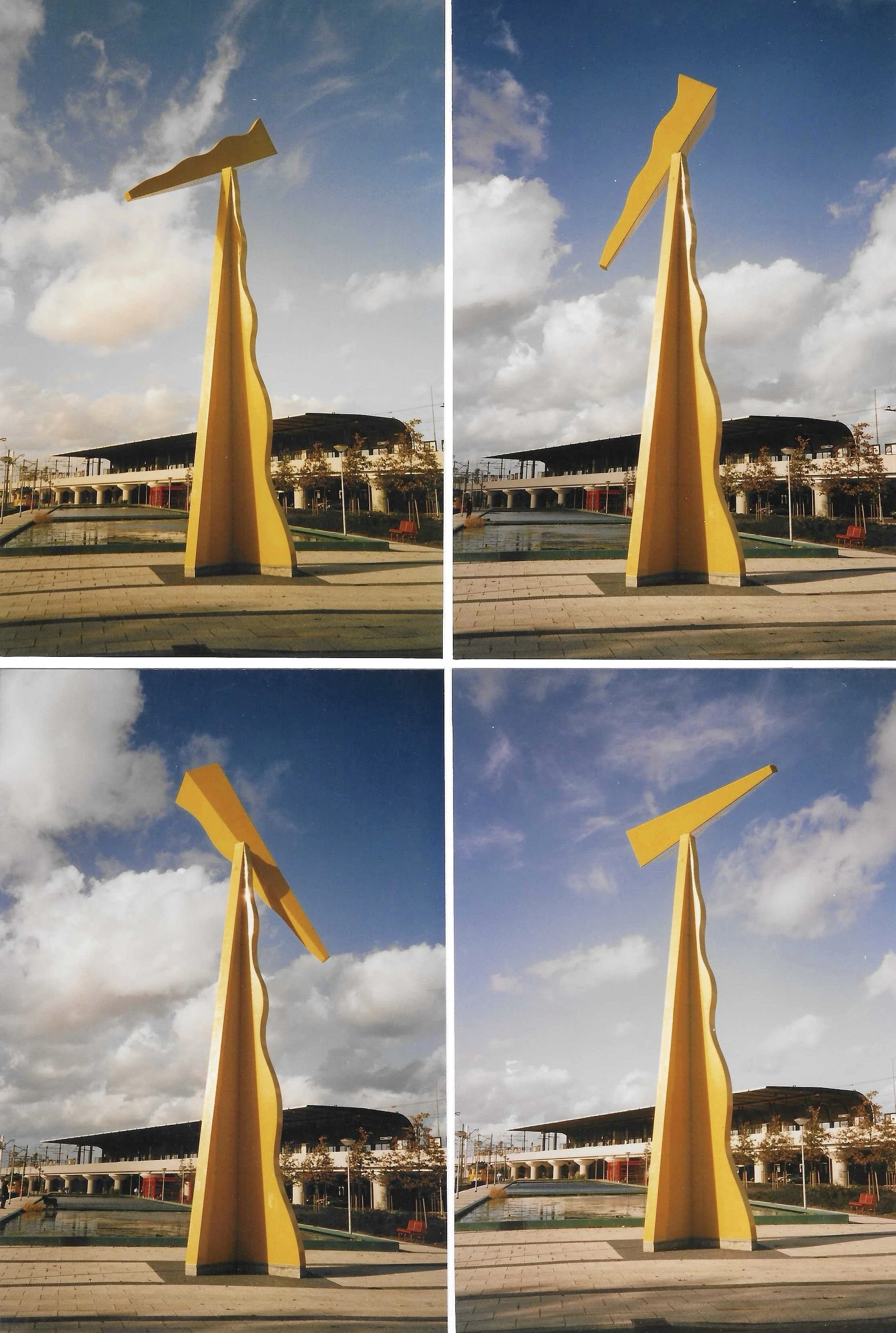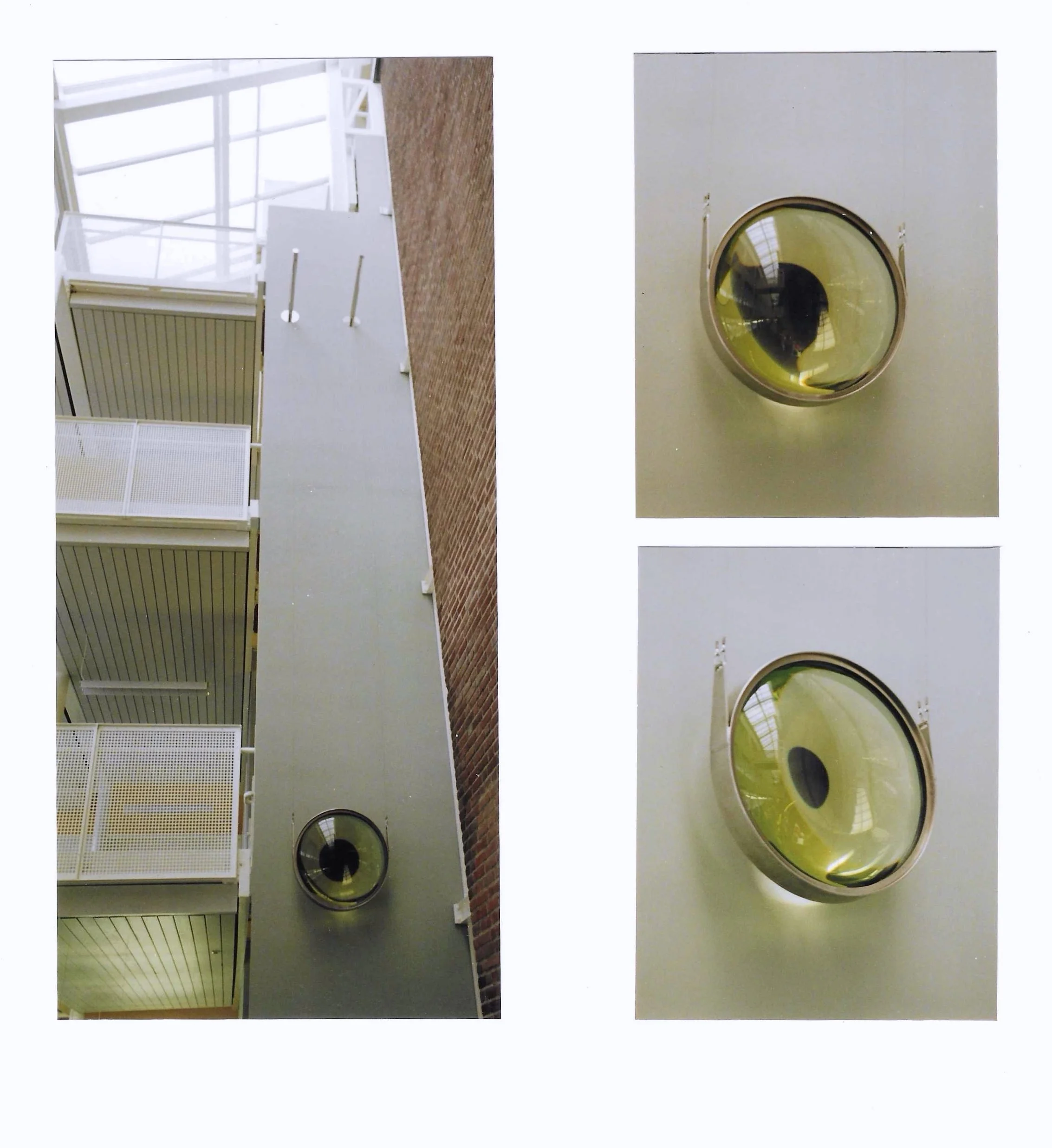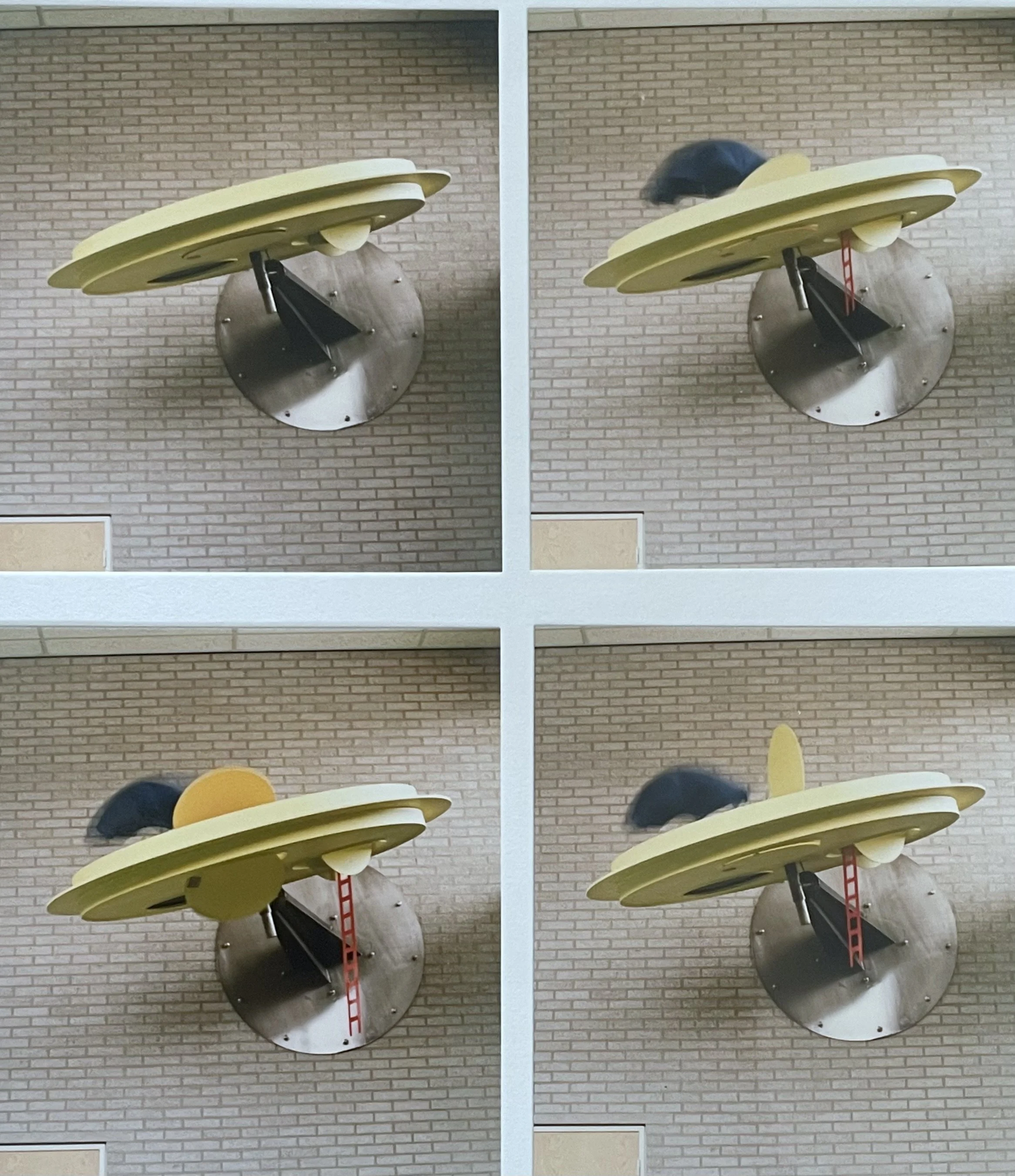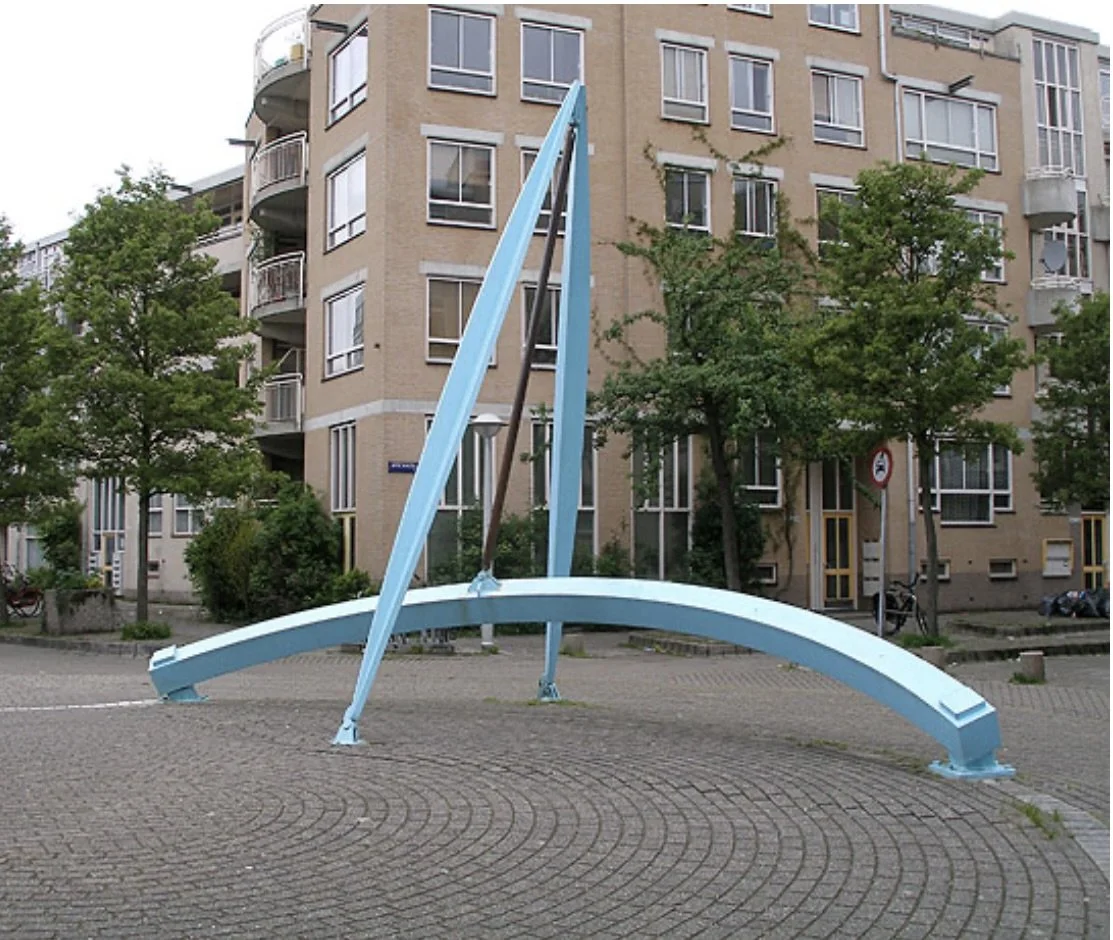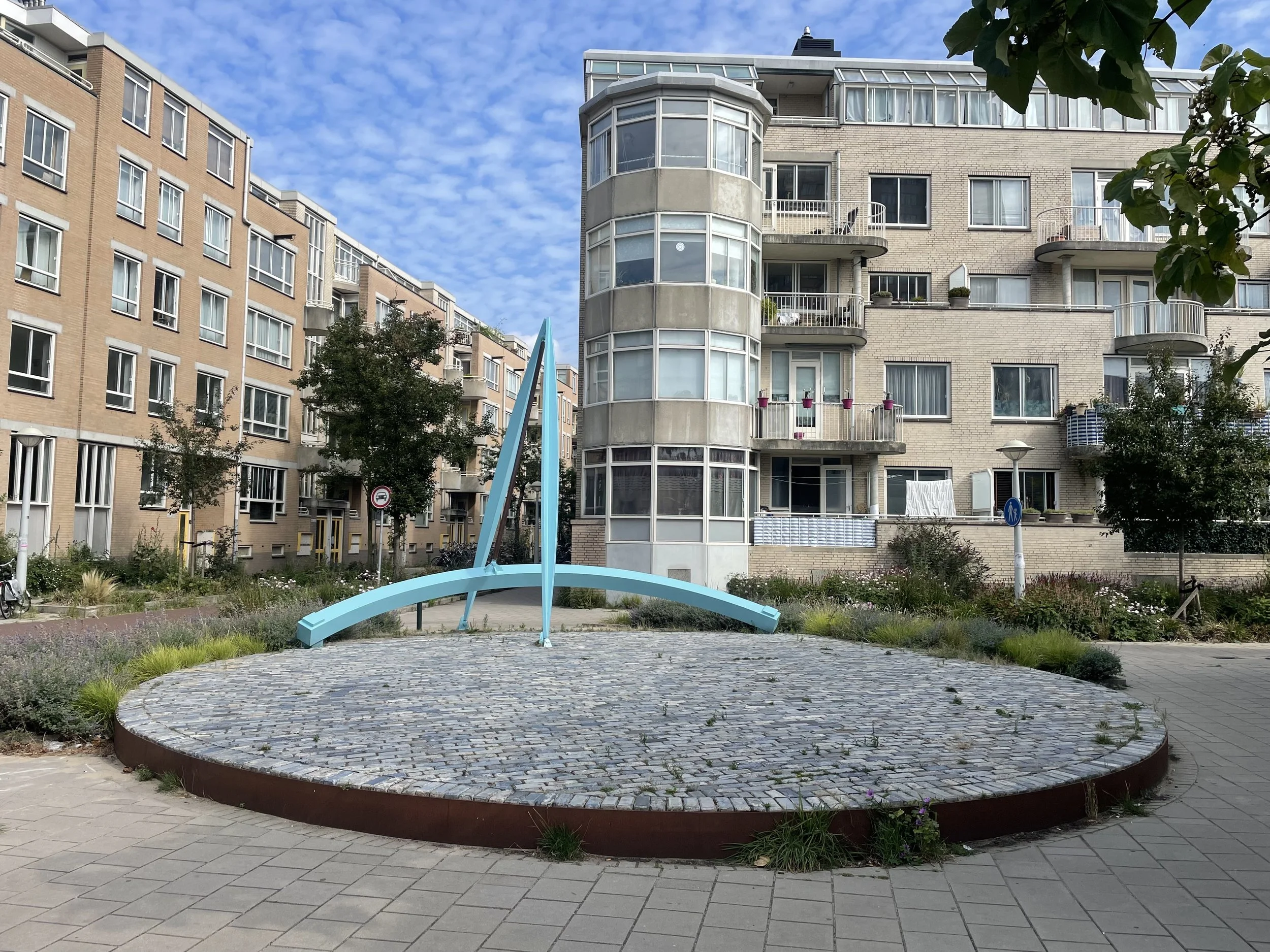'Hydrosculpture' Hoofddorp 1993
This artwork was commissioned by the municipality of Haarlemmermeer. The location is the pond in the Overbos neighborhood park in Hoofddorp. The work consists of a stainless steel structure set in motion by a powerful jet of water.
The pond is located at one of the lowest points in the Netherlands. The artwork refers to the ingenuity and energy constantly required to control the tireless force of water.
The principle of movement was experimentally established based on a working scale model. The unexpected movement is the result of the law of conservation of angular momentum.
By using a vertical and horizontal bearing, the work can move freely in all directions. Due to the tilt of the column, the drive plate repeatedly returns to the water jet, and the artwork is constantly in motion.
The sculpture is propelled upward by the water jet, skimming past it, dancing on it, cutting through it, and so on.
ZHIZHEN - DE WIJZER
The new station, the Huygens Museum, and the 140-meter-long pond define the location of the artwork I created for the municipality of Voorburg.
It's a place where people arrive and depart in all directions. With “DE WIJZER" I want to explore these factors while simultaneously creating an autonomous work.
The sculpture consists of two parts, is 14 meters high, 2 meters wide, and weighs 6,000 kg. The parts differ in size and proportion, but the shape is almost identical.
The column and the fin consist of a welded steel structure and are clad with powder-coated steel plates. The plates are secured with stainless steel bolts, largely giving the sculpture its character.
11 The movement and plating of “DE WIJZER” allow connections to be made with tools and structures of ships and aircraft. However, the free, wavy lines, the color, and the shiny bolts are indications that it is detached from any function.
The fin is balanced in such a way that it can remain in any position. The bearing is mounted at a 45° angle, allowing the fin to assume both a vertical and horizontal position. The starting position is when the fin points perpendicularly downward. At that moment, the wavy and straight sides of both parts form a whole.
The "ZHIZHEN" can remain in the same position for days and suddenly, within seconds, point in different directions.
"LENS AND NEEDLE" ARTWORK REGIONAL HOSPITAL HILVERSUM 1991
The work consists of two parts, both located in the hall at the front of the building.
On the right side of the entrance, a vertical, elongated sculpture has been designed. It consists of a highly polished metal needle with incorporated points of light. These points of light shine against the vertical band of plastic, dacron, creating a regular pattern of round light spots. The intensity of the light naturally depends on the ambient light intensity.
The swirling air in the hall will cause the "streamer" to rotate, causing the round shapes projected onto it to change and even disappear for a moment. This creates an interplay between calm and sudden movements of light.
Opposite this, on the other side of the hall, a glass lens is hung at a distance from the wall. Behind it, a blue round shape is placed on the wall.
The light spot in the needle appears and disappears due to air currents. The blue shape behind the lens changes and even disappears completely depending on the viewpoint. This invites viewing from different places within the building.
The unity of the work is based on both contrast and similarity. The needle is positioned in a place you have to walk around. The lens, on the other hand, hangs in a spot more or less freely provided by the building itself. Both parts share the common theme of disintegration and restoration, a recurring theme in my work.
The location, design, choice of materials, and function of the whole are intended to make the designed image specific to the space of the regional hospital in Hilversum.
Chinaturner /fountain with powder-coated kinetic sculpture next to Heerhugowaard town hall
The Aeronaut
A spaceship hangs in the common room of the Jules Verne School. Not a high-tech, shiny device from science fiction films, but a stereotypical flying saucer: a flat disk in which all sorts of things happen. Every now and then, a balloon inside the saucer inflates. Then a ladder rolls down and the hatches open and close. The ship prepares for departure; only the pilot needs to be retrieved. Artist Tjoe Fang King clearly drew inspiration from the school's namesake. Jules Verne was a Shovelist, fascinated by the future, science, and progress. The aeronaut seems like a new addition to the adventurous modes of transport in Verne's repertoire. The artwork exudes the same sense of adventure as the nineteenth-century author's books. At the same time, it has a somewhat old-fashioned feel. But as with Verne, it's not about the technology, but about the stories and the dreams. Fang King has created more kinetic artworks like this. He wanted this piece to be continuous and to make children aware of the phenomenon of time in a different way.
ARTWORK "MADELEINE" BOXMEER TJOE FANG KING
The work I created for the Madeleine nursing home consists of a stainless steel bowl with a tilting structure in a round pond and garden design.
The water bowl is gimbal-mounted and can therefore move in all directions. The fountain sprays water into the bowl, unbalancing it. When and in which direction the tilt occurs is unpredictable and depends on the wind and the final position of the movement.
As the bowl slowly fills, a tension builds, which is released as the bowl tips in an unexpected direction.
This unpredictable movement creates a captivating and interesting image, brings the surroundings to life, and invites observation.
Dancing UFO 6 dynamic sculptures / Municipality Alkmaar
De Passer / Lizzy Ansingstraat Amsterdam 2025




